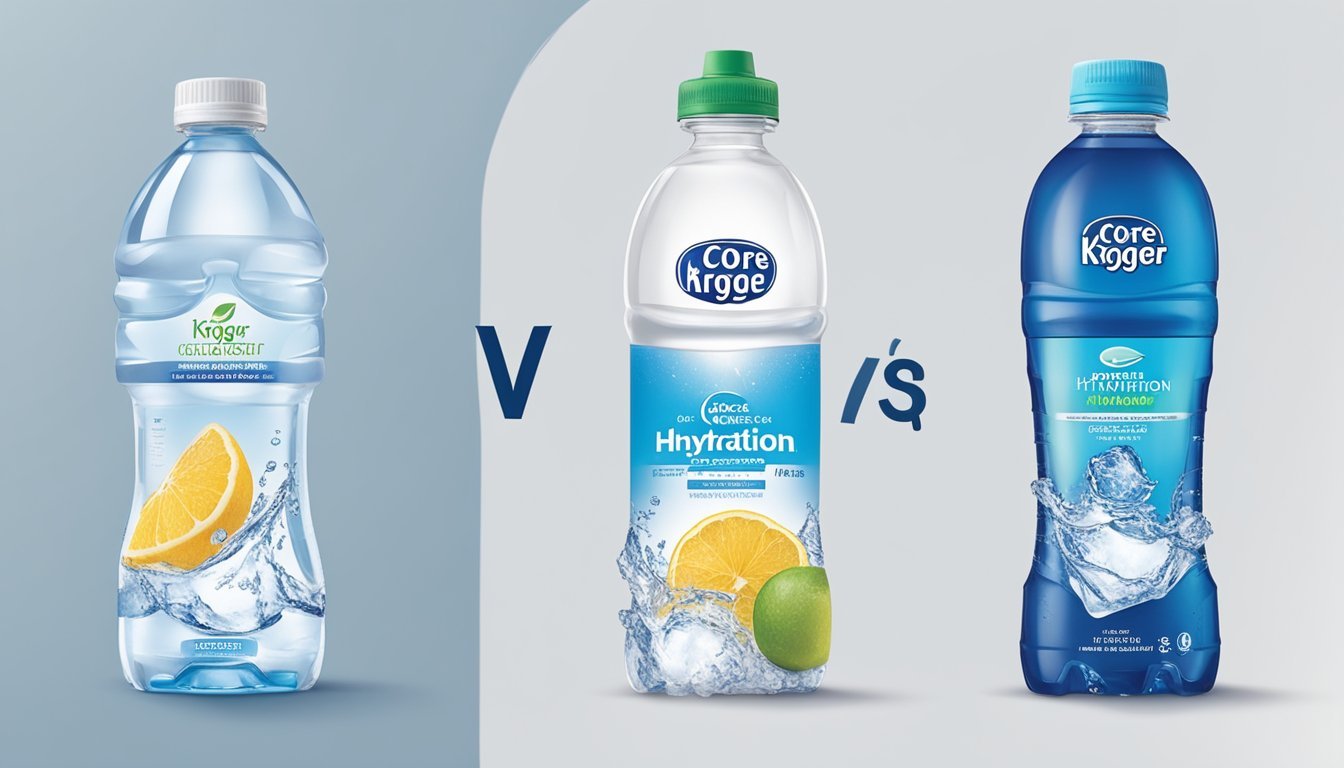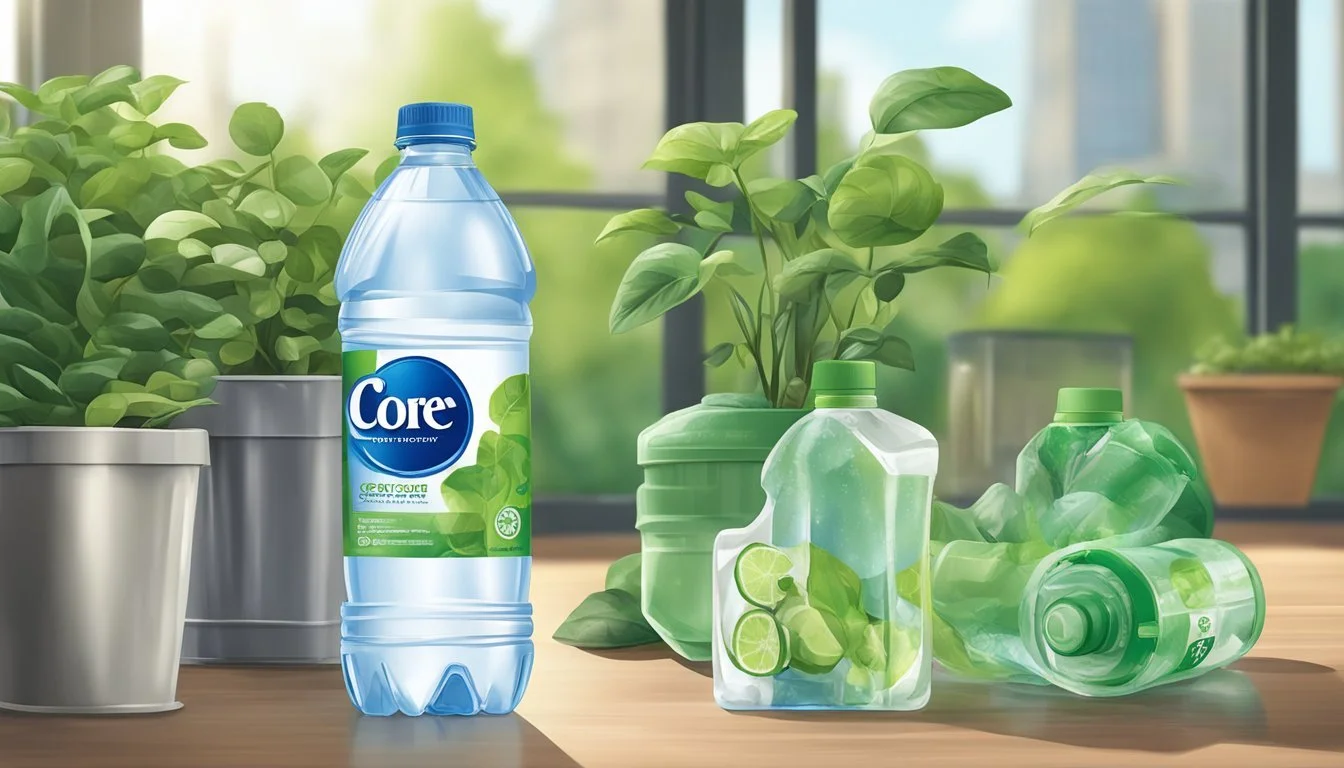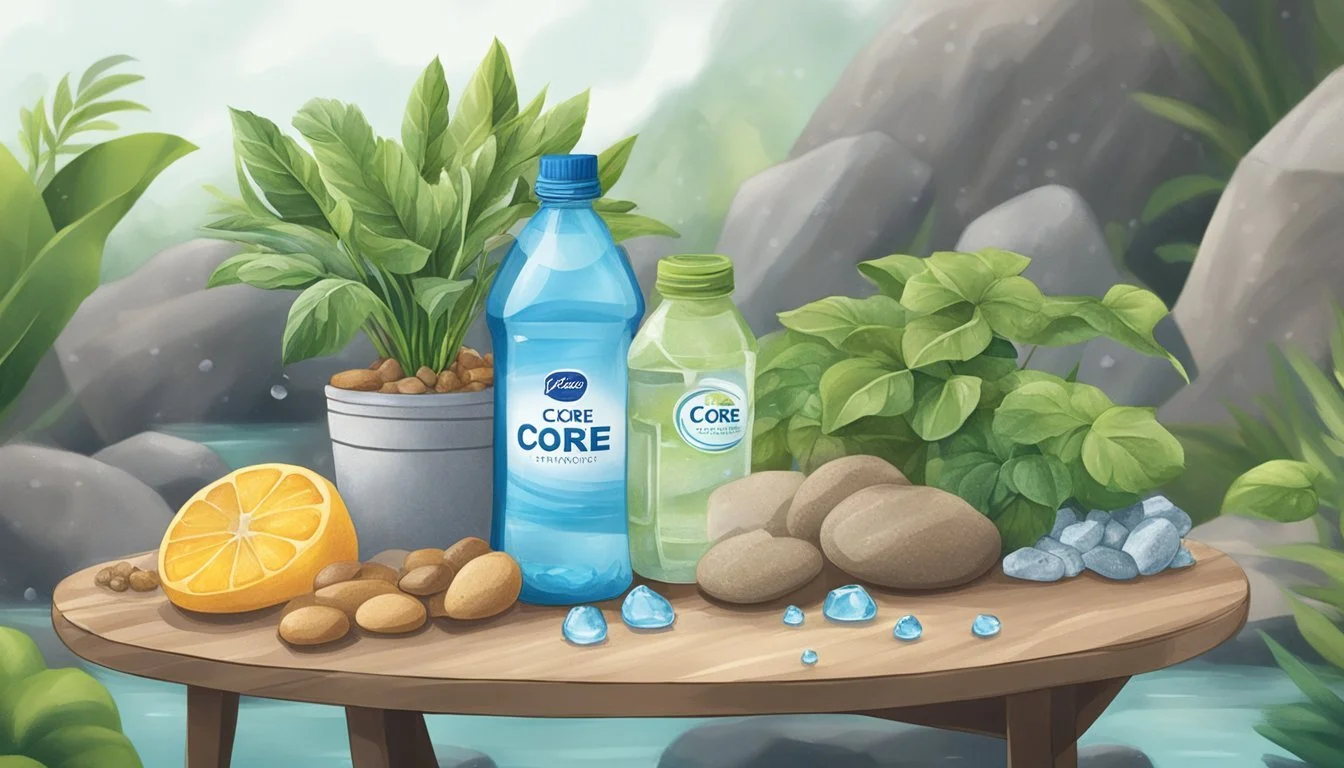Core Hydration vs. Kroger
Comparing Bottled Water Quality
Choosing the right bottled water brand can be challenging with so many options available. This post dives into two popular choices: Core Hydration and Kroger. From a hydration perspective, Core Hydration stands out with its balanced electrolytes and minerals, providing an optimal pH level that many consumers find beneficial.
Kroger bottled water, on the other hand, is a staple in many households due to its affordability and widespread availability. Although it meets all FDA regulations and many bottles are BPA-free, there are still concerns about contaminants like microplastics. When considering taste, many users report that Core Hydration provides a smoother experience, while Kroger's water may sometimes have a subtle, less favorable aftertaste.
For those who prioritize convenience and price, Kroger’s bottled water is a reasonable choice. However, if quality and enhanced hydration are crucial, Core Hydration could be the better option.
Overview of Bottled Water Industry
The bottled water industry is vast, encompassing various brands and companies, adhering to health and safety regulations, and reflecting current consumer beverage consumption trends.
Prominent Brands and Companies
The bottled water market includes numerous prominent brands and companies. Kroger and Core Hydration are notable examples, each offering distinct product features.
Kroger adheres to FDA regulations and ensures its water meets safety and quality standards. Core Hydration emphasizes its optimal pH and the addition of electrolytes for better taste. Their products often come in recyclable, BPA-free bottles. Other major players include Dasani, Fiji Water, and Evian. Each brand has carved out its niche, appealing to different customer preferences based on taste, packaging, and price points.
Health and Safety Regulations
Health and safety regulations are critical in the bottled water industry. The FDA sets the standards that bottled water must meet in the United States, ensuring it is safe for consumption.
Bottled water must adhere to these strict guidelines, which cover contamination levels, labeling, and overall safety. The International Bottled Water Association (IBWA) also plays a significant role, offering additional standards and certifications for compliance. This dual layer of oversight helps maintain high standards, protecting consumers from contaminants such as PFAS, microplastics, and BPA. Many companies now offer BPA-free bottles to address health concerns.
Consumer Beverage Consumption Trends
Consumer preferences in the beverage market have shifted significantly over the years. Increasingly, individuals seek healthier, convenient, and environmentally friendly options.
Bottled water has become a popular choice as consumers move away from sugary sodas and juices. Brands like Core Hydration and Kroger have responded by offering products that cater to health-conscious buyers. This includes features like added electrolytes and improved packaging. Sustainability is also a growing trend, with demand for recyclable and eco-friendly bottles rising. Additionally, there's a significant focus on the origin and purity of the water, influencing purchase decisions among informed consumers.
Comparing Core Hydration and Kroger Bottled Water
Core Hydration and Kroger bottled water cater to different market segments with distinct brand philosophies. Core Hydration emphasizes purity and balanced pH, whereas Kroger offers value-priced options.
Brand Origins and Recognition
Core Hydration is known for its emphasis on balanced pH and electrolytes. It markets itself as premium bottled water, often found in health and wellness sections.
Kroger bottled water comes from a major supermarket chain known for affordable pricing. While it doesn't focus on pH balance or added minerals, it is widely recognized for accessibility and value.
Product Range and Varieties
Core Hydration offers water that is pH balanced and includes minerals like potassium bicarbonate, magnesium chloride, and calcium chloride. These ingredients help to maintain proper hydration and electrolyte balance.
Kroger bottled water primarily focuses on affordability and availability. It provides basic purified and spring water options, without added electrolytes or minerals. This makes it a budget-friendly choice for everyday hydration needs.
Quality and Purity
When comparing Core Hydration and Kroger bottled water, factors such as water source, filtration processes, and the presence of contaminants are crucial. Both brands aim to provide safe drinking options, yet there are clear distinctions in their quality and purity profiles.
Water Source and Filtration Process
Core Hydration sources its water from trusted springs and uses a detailed 7-stage purification process. This involves reverse osmosis, carbon filtration, and ozonation. These steps ensure that the water is balanced with essential minerals and achieves a pH similar to the body's natural levels. Core Hydration prides itself on delivering water that is clean and free from impurities.
Kroger bottled water, in contrast, often uses municipal sources. Their filtration includes carbon filters and reverse osmosis, which removes many impurities. While Kroger also adheres to FDA regulations, the water's source and treatment methods may not be as rigorous as those used by Core Hydration. This can impact the overall perception of quality among consumers.
Presence of Contaminants and Additives
Core Hydration emphasizes purity by minimizing contaminants such as heavy metals and PFAS chemicals. The water is also free from fluoride and boasts a low presence of microplastics, due to their strict bottling processes. This commitment to purity makes Core Hydration a preferred choice for those sensitive to water quality concerns.
Kroger bottled water also meets safety standards and is regularly tested. However, it has faced scrutiny regarding microplastics and BPA in the past. The presence of potentially harmful contaminants like arsenic and mercury is generally within safe limits but can vary. While many Kroger bottles are now BPA-free, concerns about plastic pollution and waste remain.
Both brands endeavor to provide safe drinking water, but Core Hydration's meticulous filtration and focus on minimizing contaminants give it a competitive edge in terms of purity and quality.
Health Considerations
When comparing Core Hydration and Kroger bottled water, key health factors include hydration effectiveness, pH levels, and the benefits of added electrolytes.
Hydration and pH Levels
Maintaining proper hydration is crucial for overall health. Core Hydration touts its purified water as having a slightly alkaline pH of 7.4, designed to match the natural pH of the human body. This feature can be appealing to those seeking to maintain bodily pH balance, although it's important to note that the body typically regulates pH levels efficiently on its own.
On the other hand, Kroger bottled water meets FDA safety standards but does not specifically market its water's pH level. Regular drinking water usually falls within a pH range of 6.5 to 8.5. While it may lack the specific pH claims of Core Hydration, Kroger bottled water still provides essential hydration.
Electrolytes and Their Benefits
Core Hydration enhances its water with added electrolytes: calcium chloride, magnesium chloride, and potassium bicarbonate. These minerals can aid in maintaining electrolyte balance, which is vital for muscle function, nerve transmission, and overall cellular health.
Kroger bottled water typically does not include added electrolytes. This simplicity caters well to those who prefer their water without additives. Whether enhanced with minerals or not, both brands focus on delivering clean and safe drinking water, catering to different consumer preferences.
While Core Hydration’s added electrolytes may offer marginal benefits in hydration efficiency and health, the choice between the two often boils down to personal preference on additive content and perceived health benefits.
Taste and Consumer Preferences
Both Core Hydration and Kroger bottled waters appeal to different consumer preferences when it comes to taste and perceived quality. This section explores the unique flavor profiles and overall taste characteristics of each brand.
Flavor Profile and Water Taste
Core Hydration claims its water is balanced with a perfect pH that aligns with the body's natural levels, around 7.4. This neutral pH aims to provide a smooth and clean taste. Consumers often describe Core Hydration as having a light and refreshing mouthfeel without any noticeable aftertaste.
Kroger Bottled Water adheres to FDA regulations, ensuring safety and quality. However, some consumers have noted traces of plastic or other subtle off-flavors. While many bottles are now BPA-free, the flavor may still be impacted by microplastics or the material of the bottle itself.
In summary, Core Hydration generally receives positive feedback for its clean and neutral taste, while Kroger Bottled Water's taste is more variable, with some consumers detecting less desirable flavors.
Environmental and Sustainability Considerations
Both Core Hydration and Kroger bottled water brands make efforts to address environmental and sustainability concerns. Each focuses on different aspects such as packaging materials and their impact on carbon footprint.
Packaging and Recycling Initiatives
Core Hydration emphasizes 100% recyclable plastic bottles. These BPA-free bottles aim to be both environmentally friendly and convenient. Core Hydration's packaging highlights its ergonomic design, meant to appeal to health-conscious consumers concerned about both health and environmental impact.
Kroger, on the other hand, prioritizes adhering to FDA regulations and ensuring the quality of their products. They also address sustainability in their overall corporate strategy. Efforts include initiatives to reduce plastic waste and promote recycling, but specific details about their bottled water packaging and recycling practices are less emphasized compared to Core Hydration.
Impact of Plastic Bottles on Carbon Footprint
The carbon footprint of plastic bottles is a significant concern for both brands. Core Hydration's BPA-free recyclable bottles reduce potential health risks and contribute less to environmental waste. Their focus on ergonomic design also suggests an interest in reducing secondary waste—bottles that are easier to use might be less likely to be discarded improperly.
Kroger's broader environmental strategy, as outlined in their ESG report, includes measures to minimize their carbon footprint. This can involve improving supply chain efficiency and reducing waste, though specific actions relating directly to their bottled water products are not as well-documented as Core Hydration's initiatives.
In conclusion, both brands are making strides in sustainability, focusing on reducing their environmental impact and promoting recycling.
The Bottom Line
When comparing Core Hydration and Kroger bottled waters, several factors must be considered to determine which is better for consumers.
Core Hydration markets itself as a premium water product. It provides electrolytes like potassium bicarbonate, magnesium chloride, and calcium chloride, which can benefit active individuals. Core bottles are often designed for reuse, promoting sustainability.
Kroger bottled water adheres to FDA safety regulations and offers affordable, safe drinking water. Despite safety assurances, some concerns about microplastics and environmental impact persist. Many Kroger bottles are BPA-free, addressing one consumer concern.
Price and accessibility play critical roles. Kroger is widely available at grocery stores and offers a cost-effective option. Core Hydration is typically priced higher, reflecting its premium status.
Taste can be subjective. Some consumers prefer the crisp, clean taste of Core, while others might find Kroger acceptable for daily hydration needs.
Aspect Core Hydration Kroger Bottled Water Premium Status Yes No Electrolytes Yes, unspecified doses No Reusable Bottle Often designed for reuse Standard design Price Range Higher Lower Availability Select locations Wide availability Sustainability Better bottle design Potential concerns
Finding the best choice ultimately depends on individual preferences and priorities, such as taste, price, and environmental considerations.




